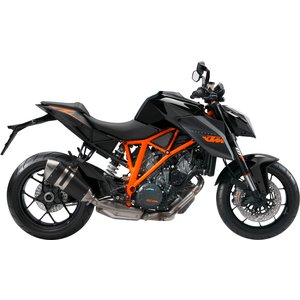KTM 1290 Super Duke GT (2022) Review: The Torque-Fueled Sports Tourer That Redefines the Genre
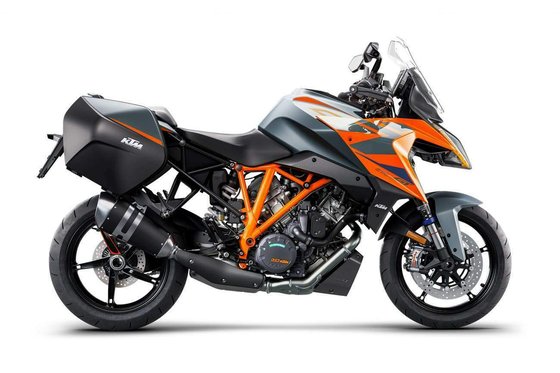
Introduction
The 2022 KTM 1290 Super Duke GT isn’t just a motorcycle—it’s a declaration of war against compromise. Positioned as a sports tourer, this Austrian machine defies categorization with its nuclear-powered V-twin engine, razor-sharp electronics, and a chassis that laughs at the concept of "straight roads." But does it deliver as a grand tourer? Spoiler: It does, but not in the way you’d expect. After a day spent carving alpine passes and devouring autobahns, I’m convinced this is the most unapologetically thrilling mile-muncher ever built.
Engine Performance: The Beast Unleashed
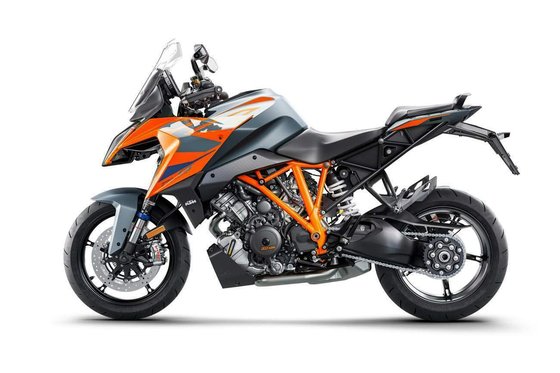
At the heart of the Super Duke GT lies the updated LC8 engine—a 1,301 cc 75° V-twin that’s been massaged to meet Euro 5 standards without losing its soul. Let’s cut to the chase: 175 hp at 9,750 rpm and 141 Nm (104 lb-ft) of torque peaking at 7,000 rpm don’t tell the full story. What matters is how this powerplant behaves when you twist the throttle.
- Low-End Brutality: From 3,000 rpm, the engine pulls like a freight train hooked to a SpaceX booster. There’s no lag, no hesitation—just instant, arm-stretching thrust that pins you to the tank. In Sport mode, the throttle response is so immediate it feels like the bike is reading your synapses.
- Mid-Range Dominance: Between 5,000–8,000 rpm, the GT transforms into a warp-speed device. Overtaking becomes a formality—a slight wrist flick catapults you past traffic with a bass-heavy exhaust bellow that’s equal parts mechanical symphony and primal roar.
- Top-End Surprise: Despite its twin-cylinder configuration, the engine spins freely to its 10,500 rpm redline. The rush never plateaus, making autobahn blasts addictive (and slightly illegal).
Fuel consumption? KTM claims 5.7 L/100 km (41.3 mpg), but expect closer to 6.5 L/100 km (36 mpg) if you’re exploiting the performance. The 23-liter tank still delivers a 350+ km (217+ mile) range—enough between espresso stops.
Design & Ergonomics: Function Meets Aggression
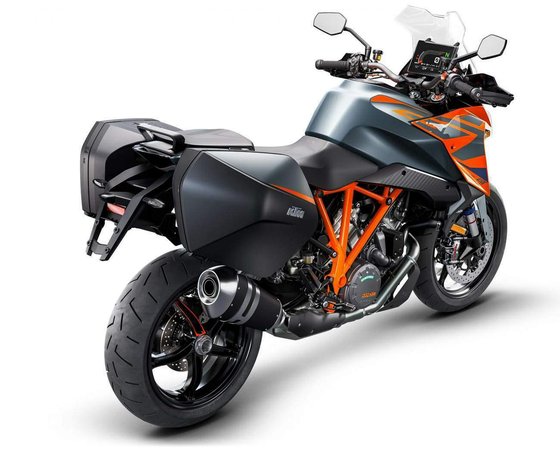
The GT’s aesthetic is pure KTM—edgy, angular, and dripping with aggression. The orange/black/white livery looks like it was designed by a team that binge-watched Mad Max. But this isn’t just for show:
- Wind Protection: The minimalist windscreen is a joke at first glance, but it works. At 150 km/h (93 mph), turbulence is minimal, though taller riders might crave an aftermarket upgrade.
- Seat & Riding Position: The 835 mm (32.9") seat height suits most riders, and the ergos strike a perfect balance. The bars are close enough for sporty riding, while the slightly rearset pegs leave room for all-day comfort. The seat itself? Firm but supportive—no numb butt syndrome after 300 km.
- Weight Distribution: At 225 kg (496 lbs) wet, the GT feels shockingly light on the move. The mass centralization is witchcraft—flicking through hairpins feels like riding a hypernaked, not a tourer.
Electronics & Tech: Smarter Than Your Phone
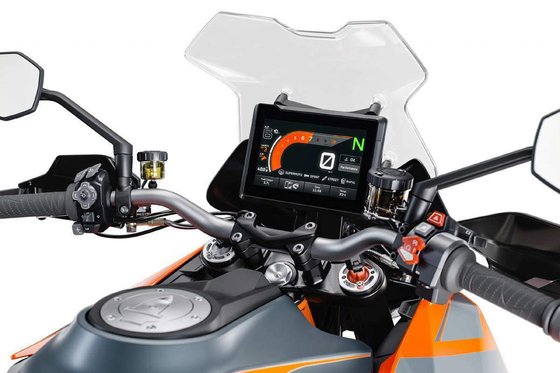
The 7-inch TFT dash isn’t just pretty—it’s the brain of a tech arsenal that’d make Silicon Valley jealous:
- Turn-by-Turn+ Navigation: KTM’s new TBT+ system (powered by Sygic) is a revelation. Import routes via KTM Connect, and directions overlay the dash. No phone mounts needed. The offline maps are a godsend for alpine adventures.
- Ride Modes: Rain, Street, Sport, and optional Performance Mode. Sport sharpens throttle response and lets the rear wheel step out (within reason). Rain mode turns the GT into a docile commuter—useful, but why would you?
- Semi-Active Suspension: The WP APEX setup auto-adjusts damping based on riding style and load. Preload settings (Rider, Rider+Pillion, etc.) are intuitive. The anti-dive function during hard braking is pure magic—no front-end nosedives.
- Safety Net: Cornering ABS, traction control, and tire-pressure monitoring come standard. The Brembo Stylema brakes (320 mm dual discs up front) offer sublime feel and stopping power.
Handling & Ride Experience: A Track Tool in Tourer Clothing
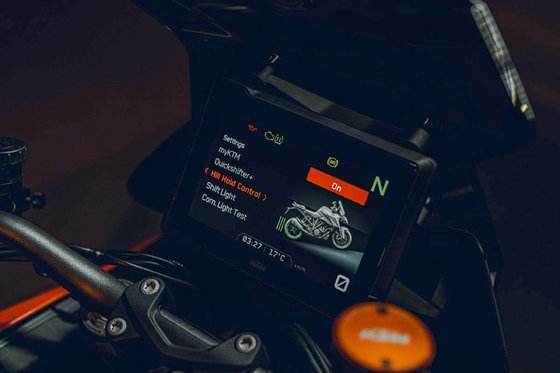
Let’s be clear: The GT isn’t a relaxed tourer. It’s a 1290 Super Duke R with luggage hooks and a bigger tank. Push it, and the chassis responds with telepathic precision:
- Front End Feel: The WP USD 48 mm forks (125 mm travel) and stiff chromoly frame transmit every ripple in the pavement. You’ll know exactly what the front tire is doing mid-corner.
- Rear-End Agility: The semi-active shock (156 mm travel) keeps the Continental ContiSportAttack 4 tire glued to the tarmac. Even over broken backroads, the GT stays composed.
- Steering Geometry: With a 24.9° rake and 107 mm (4.2") trail, the GT turns faster than a caffeine-addicted mongoose. Flicking through S-bends requires mere thoughts, not effort.
The 1,482 mm (58.3") wheelbase adds stability at speed, but the real hero is the unsprung weight reduction—the new wheels save 1 kg, making direction changes almost psychic.
Competition: How the GT Stacks Up
BMW S1000XR
- Pros: Smoother inline-four engine, superior wind protection.
- Cons: Lacks the GT’s raw character. Feels sterile in comparison.
Ducati Multistrada V4 S
- Pros: Advanced radar system, plush Skyhook suspension.
- Cons: Heavier (221 kg vs. 225 kg), less engaging engine.
Yamaha Tracer 9 GT
- Pros: Value-packed, comfortable for two-up rides.
- Cons: Underpowered (119 hp) next to the KTM.
Verdict: The GT dominates for riders prioritizing thrill over practicality. It’s the only sports tourer that’ll have you taking the long way home—every time.
Maintenance: Keeping the Beast Happy
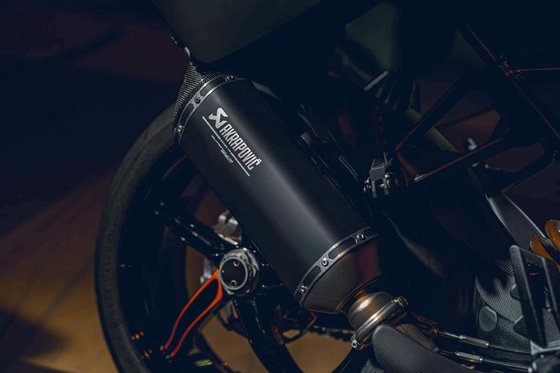
Owning a 175 hp touring missile requires diligence. Here’s what to watch:
- Oil Changes: Use JASO T903-certified 10W-50 oil every 10,000 km (6,200 miles). The 3.5L capacity (with filter) demands quality synthetic—MOTOPARTS.store stocks KTM-approved options.
- Valve Checks: Every 15,000 km (9,300 miles). Intake valves: 0.10–0.15 mm (0.004–0.006"), exhaust: 0.25–0.30 mm (0.010–0.012").
- Chain Care: The 525 X-ring chain needs regular cleaning and lubrication. A DID chain kit from our store ensures longevity.
- Brake Fluid: Flush with DOT 4/5.1 every two years. Pair with Brembo pads for OEM performance.
- Coolant: Replace every 24,000 km (15,000 miles). The 3.2L system prefers ethylene glycol-based mixes.
- Tires: The ContiSportAttack 4 tires grip like glue but wear quickly under hard use. Consider Pirelli Angel GTs for longer life.
Pro Tip: The clutch (PASC anti-hopping) rarely needs adjustment, but bleed the hydraulic system annually for crisp shifts.
Conclusion: The Apex Predator of Sports Tourers
The 2022 KTM 1290 Super Duke GT isn’t for everyone—and that’s its greatest strength. It refuses to dull its edges to appease the masses. What you get instead is a motorcycle that’s as thrilling on a mountain pass as it is on a cross-continental haul. The tech suite keeps you safe, the suspension adapts to your madness, and that engine… oh, that engine. It’s a reminder that motorcycles should stir the soul, not just transport the body.
If your idea of touring involves detours through canyons and grinning like a maniac at every fuel stop, the GT isn’t just an option—it’s the only choice.
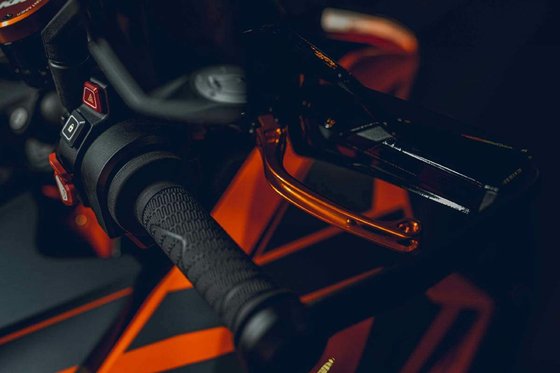
Ready to personalize your GT? Explore MOTOPARTS.store’s curated selection of performance upgrades, luggage solutions, and ergonomic tweaks to make your Super Duke GT truly yours.


Specifications sheet
| Engine | |
|---|---|
| Stroke: | Four-stroke |
| Max power: | 130 kW | 174.0 hp |
| Max torque: | 141 Nm |
| Fuel system: | Keihin EFI, 56 mm throttle body |
| Max power @: | 9750 rpm |
| Displacement: | 1301 ccm |
| Fuel control: | Double Overhead Cams (DOHC) |
| Max torque @: | 7000 rpm |
| Bore x stroke: | 108.0 x 71.0 mm (4.3 x 2.8 in) |
| Configuration: | V |
| Cooling system: | Liquid |
| Emission details: | Euro 5 |
| Compression ratio: | 13.6:1 (estimated) |
| Number of cylinders: | 2 |
| Valves per cylinder: | 4 |
| Dimensions | |
|---|---|
| Wheelbase: | 1482 mm ±15 mm (58.3 in ± 0.6 in) |
| Dry weight: | 208 |
| Wet weight: | 225 |
| Seat height: | 835 mm (32.9 in) |
| Ground clearance: | 141 mm (5.5 in) |
| Fuel tank capacity: | 23 L (6.1 US gal) |
| Drivetrain | |
|---|---|
| Chain type: | 525 X-Ring |
| Final drive: | chain |
| Transmission: | 6-speed with up/down quickshifter |
| Rear sprocket: | 38 |
| Front sprocket: | 17 |
| Maintainance | |
|---|---|
| Rear tire: | 190/55-17 |
| Engine oil: | 10W50 |
| Front tire: | 120/70-17 |
| Idle speed: | 1450 ± 100 rpm |
| Brake fluid: | DOT 4 / 5.1 |
| Spark plugs: | NGK LKAR9BI-10 (inner), NGK LMAR7DI-10 (outer) |
| Spark plug gap: | 1.0 |
| Coolant capacity: | 3.2 |
| Forks oil capacity: | 1.08 |
| Engine oil capacity: | 3.5 |
| Engine oil change interval: | Every 10,000 km or 1 year (recommended baseline) |
| Valve clearance (intake, cold): | 0.10–0.15 mm |
| Valve clearance (exhaust, cold): | 0.25–0.30 mm |
| Recommended tire pressure (rear): | 2.9 bar (42 psi) |
| Recommended tire pressure (front): | 2.7 bar (39 psi) |
| Additional Features | |
|---|---|
| Anti-dive: | Standard |
| Navigation: | Turn-by-turn PLUS via KTM Connect (SYGIC® powered) |
| Instruments: | 7-inch TFT display |
| Suspension modes: | Preload settings for RIDER, RIDER & PILLION, RIDER & LUGGAGE, RIDER/PILLION & LUGGAGE |
| Chassis and Suspension | |
|---|---|
| Rake: | 24.9° |
| Frame: | Chrome-moly tubular space frame, powder-coated |
| Trail: | 107 mm (4.2 in) |
| Rear brakes: | Single 240 mm disc, Brembo two-piston caliper (Bosch 9ME Cornering ABS) |
| Front brakes: | 2 x 320 mm discs, Brembo four-piston radial calipers (Bosch 9ME Cornering ABS) |
| Rear suspension: | WP SAT (semi-active technology) monoshock |
| Front suspension: | WP Semi-active suspension USD Ø 48 mm |
| Rear wheel travel: | 156 mm (6.1 in) |
| Front wheel travel: | 125 mm (4.9 in) |



